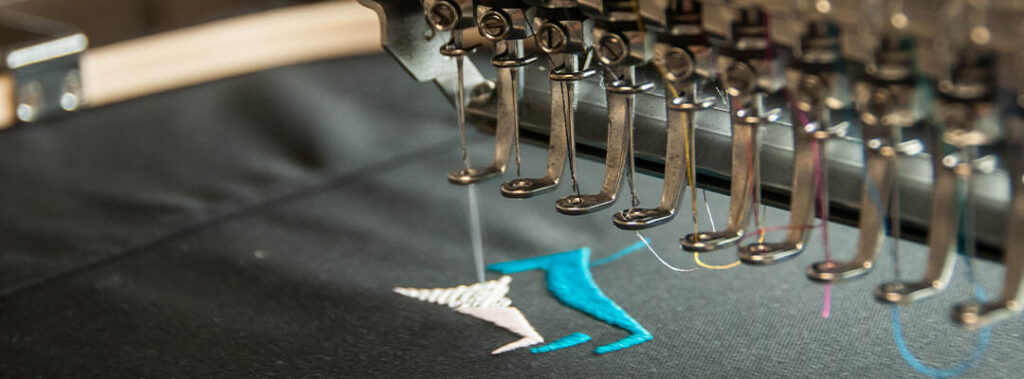
If you’re eager to unleash your creativity, adorn fabrics with intricate designs, and craft personalized gifts, you’re in the right place.
You may be asking yourself, “What do I need to start embroidering”. This guide is your passport to mastering the art of machine embroidery basics, designed especially for beginners.
Machine Embroidery vs Hand Embroidery
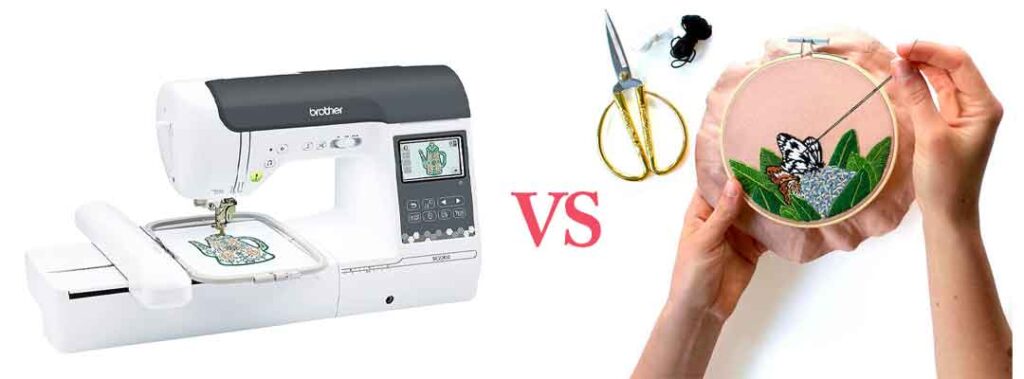
What is the difference between hand embroidery and machine embroidery? As you may have already guessed, hand embroidery is a manual process that allows for a wide variety of stitches, threads, and fabrics. Each hand-embroidered piece is unique to the sewer, showcasing their personal touch and creativity. On the other hand, machine embroidery produces highly uniform and identical stitches, creating a consistent and precise result.
Basic Supplies
Let’s begin your machine embroidery basics journey with a list of 7 essential supplies you’ll need.
Choosing the Right Machine
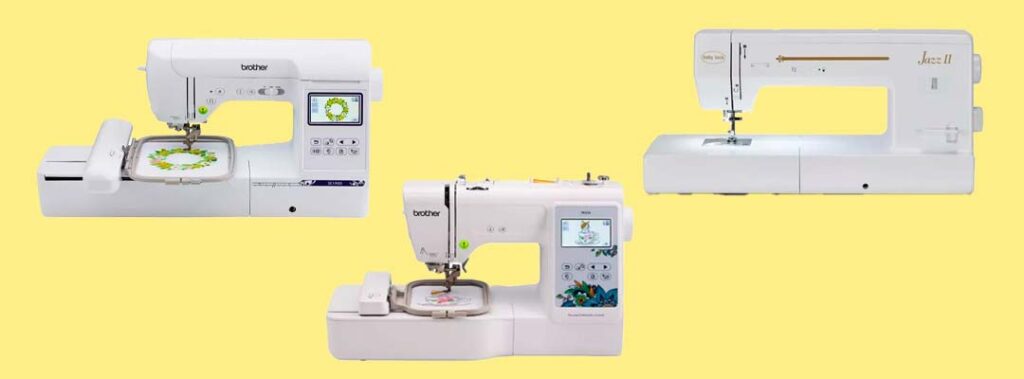
Machine embroidery is like painting with thread. It involves using a specialized sewing machine to create decorative designs on fabric. Imagine embellishing a simple t-shirt with beautiful flowers or monogramming a baby blanket with the family’s initials. The possibilities are endless!
At the top of our list of essential items is the embroidery machine itself. Learning embroidery without this crucial tool can be exceptionally challenging.
Before you jump into this exciting craft, it’s essential to select the right embroidery machine. This decision can feel overwhelming, but don’t worry; we’re here to help. Take a moment to consider the following factors when choosing your first embroidery machine:
- Budget: Determine how much you’re comfortable spending on your machine.
- Machine Features: Think about the features you’d like your machine to have. For beginners, user-friendly and straightforward machines are often the best choice.
- Brand and Model: Research reputable brands and models that are known for their reliability and customer support.
- Reviews: Read reviews from other beginners to understand their experiences with different machines.
For more detailed guidance on selecting the ideal embroidery machine basics for beginners, you can read our comprehensive buyer’s guide on purchasing your first embroidery machine.
Embroidery Design
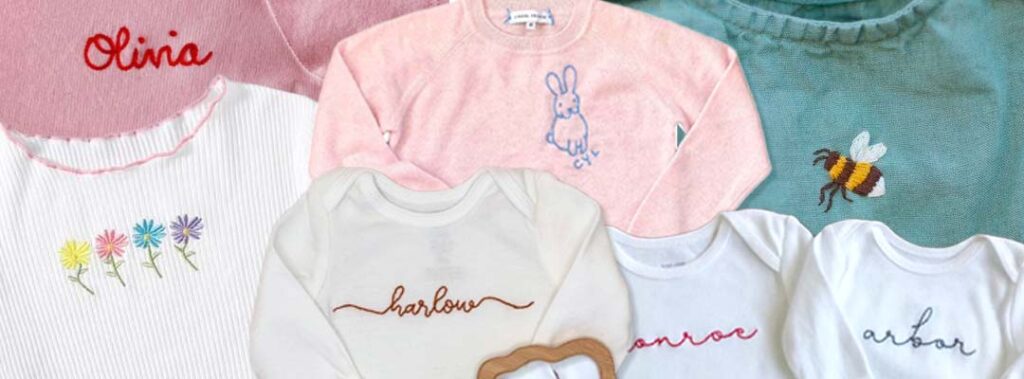
You’ll require a digitized design file. Embroidery digitization is the procedure of converting your design or image into a digital format using specialized software, enabling embroidery machines to interpret the precise path for the needle.
You can purchase embroidery digitized designs from trusted websites such as:
- Creative Fabrica
- EmbroideryDesigns.com
- Oregon Patchworks
- Embroideres.com
Embroidery Needles
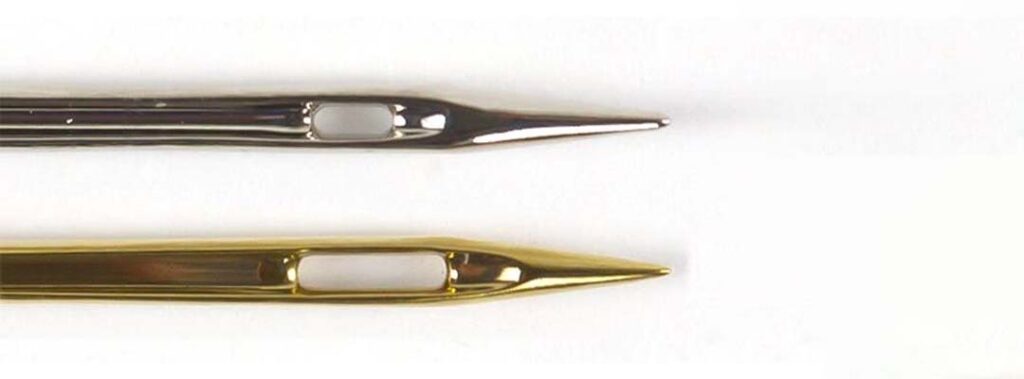
The type of needle you use in machine embroidery is crucial, as it can significantly impact the quality of your embroidery work, the durability of the design, and the overall performance of your embroidery machine.
In machine embroidery, you’ll come across various needle options. While universal needles can be used, it’s advisable to opt for needles designed specifically for this craft. The two most common types are chrome-plated steel and titanium-plated needles.
- Chrome-Plated Steel Needles: These needles are durable and suitable for most embroidery projects.
- Titanium-Plated Needles: Titanium needles are even more robust and can be an excellent choice for heavy or dense designs.
When selecting needles, consider the thickness and type of fabric you’ll be working with, as this can influence your choice. Thicker fabrics may require larger needles, while delicate fabrics may benefit from finer ones. Always refer to your machine’s manual for guidance on compatible needle types and sizes.
Thread
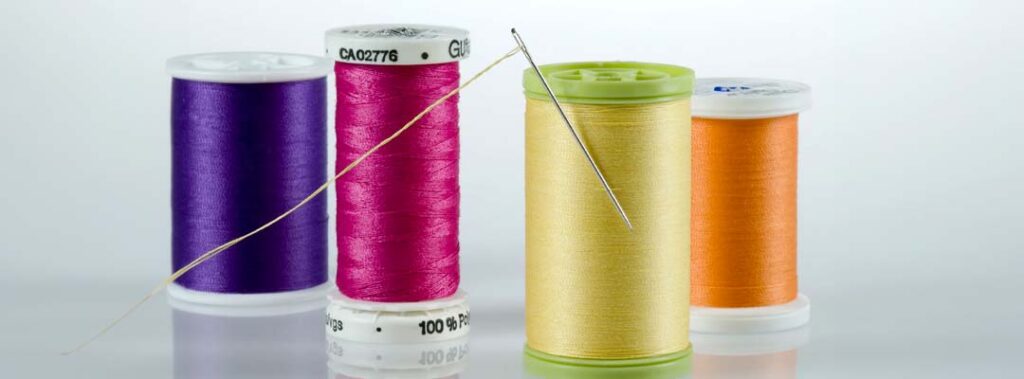
The most commonly available thread type at your local fabric store is polyester thread. Polyester is a popular choice for sewing and embroidery due to its strength, affordability, and the wide range of available colors. However, it’s important to exercise caution when using polyester thread, as it can shrink or melt when exposed to high heat.
Other available types of thread
- Cotton
- Rayon
Stabilizer
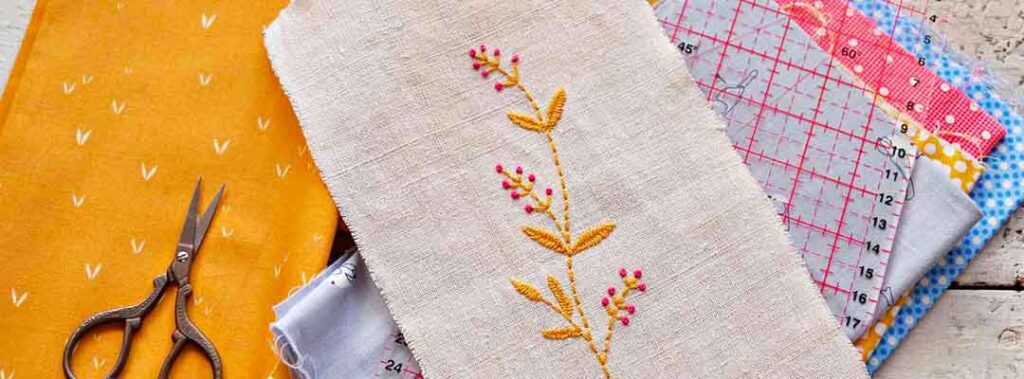
Embroidery stabilizer serves as the foundation that supports both stitches and fabric during the embroidery process. Selecting the appropriate stabilizer is crucial, as it significantly influences the quality of the stitch-out. Let’s explore the types and weights of stabilizers available:
- Light Stabilizers: Suitable for lightweight and delicate fabrics.
- Medium Stabilizers: Ideal for most general embroidery projects.
- Heavy Stabilizers: Used when embroidering on thicker or more textured materials.
Additionally, stabilizers come in various types, including backing, topper, fusible, and adhesive. The choice of stabilizer type depends on your specific project requirements. For instance, you may use a backing stabilizer for added support on lightweight fabrics, while a fusible stabilizer can adhere fabrics together for easier embroidery.
By understanding the types and weights of stabilizers, you’ll be better equipped to select the right one for each project, ensuring professional-quality results.
Temporary Adhesive

Next on the list is temporary fabric adhesive spray. This handy tool is invaluable when working with floating fabric, as it prevents shifting during embroidery. Temporary adhesive spray provides the flexibility to remove and reposition your fabric without losing its adhesive properties.
Embroidery Blanks
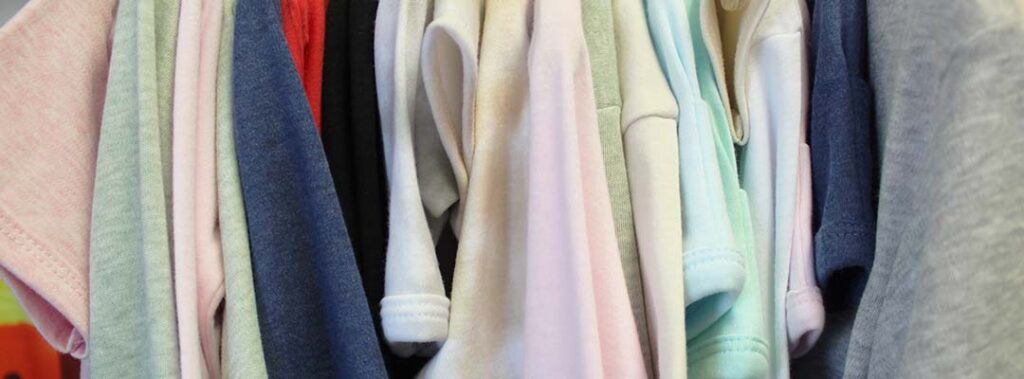
When selecting a fabric for machine embroidery, it’s best to opt for natural fabrics with a tight weave, such as cotton, linen, and wool. These materials work exceptionally well for both machine and hand embroidery.
While large retailers like Hobby Lobby, JOANN, and Michaels offer standard embroidery blanks, there are distinct advantages to sourcing your blanks from specialized embroidery suppliers.
Embroidery blank suppliers not only offer a broader range of items to embroider but also provide products designed with embroidery in mind.
For instance, you might come across infant onesies featuring convenient side or back snaps. These snaps eliminate the need to trim excess fabric from beneath the embroidery hoop, streamlining your embroidery process. Likewise, you can discover makeup bags designed to unzip into a single layer, ensuring compatibility with single-needle embroidery machines.

